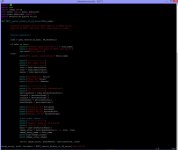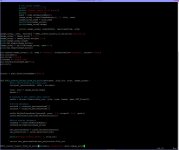Hi All,
I'm trying to use my own source of urban land use data by creating a FRC_URB2D field following the process outlined here: https://www2.mmm.ucar.edu/wrf/users/docs/user_guide_v4/v4.2/users_guide_chap3.html#_Creating_an_Urban .
I followed that process, and reviewed a previous post on this topic (https://forum.mmm.ucar.edu/phpBB3/viewtopic.php?f=35&t=10290&p=21498&hilit=FRC_URB2D#p21498) but am still running into issues. geogrid.exe seems to run fine, but the data created in the FRC_URB2D field ranges from large negative numbers to large positive numbers (when I'm expecting values between 0 and 1).
I've attached the namelist.wps, index, GEOGRID.TBL, geogrid.log, and .bil file containing the urban fraction data in the file titled brfr1212_landuse.zip in nextcloud.
Any help on this issues would be greatly appreciated!
Thanks,
Brian
I'm trying to use my own source of urban land use data by creating a FRC_URB2D field following the process outlined here: https://www2.mmm.ucar.edu/wrf/users/docs/user_guide_v4/v4.2/users_guide_chap3.html#_Creating_an_Urban .
I followed that process, and reviewed a previous post on this topic (https://forum.mmm.ucar.edu/phpBB3/viewtopic.php?f=35&t=10290&p=21498&hilit=FRC_URB2D#p21498) but am still running into issues. geogrid.exe seems to run fine, but the data created in the FRC_URB2D field ranges from large negative numbers to large positive numbers (when I'm expecting values between 0 and 1).
I've attached the namelist.wps, index, GEOGRID.TBL, geogrid.log, and .bil file containing the urban fraction data in the file titled brfr1212_landuse.zip in nextcloud.
Any help on this issues would be greatly appreciated!
Thanks,
Brian


